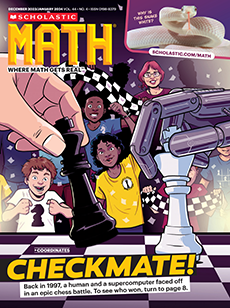Display the inequality symbols <, >, ≤, and ≥. Then ask: What words or phrases might you see in a word problem that would lead you to answer using one of these symbols? Write the words or phrases students give underneath the appropriate symbol. Some responses might include: more than, less than, at most, at least, no more than, no less than, greater than or equal to, less than or equal to, etc. Tell students that they will be learning how to write and graph inequalities in today’s lesson.
CCSS: 6.EE.B.8, MP4, MP5, MP6
TEKS: 6.9A, 6.9B
